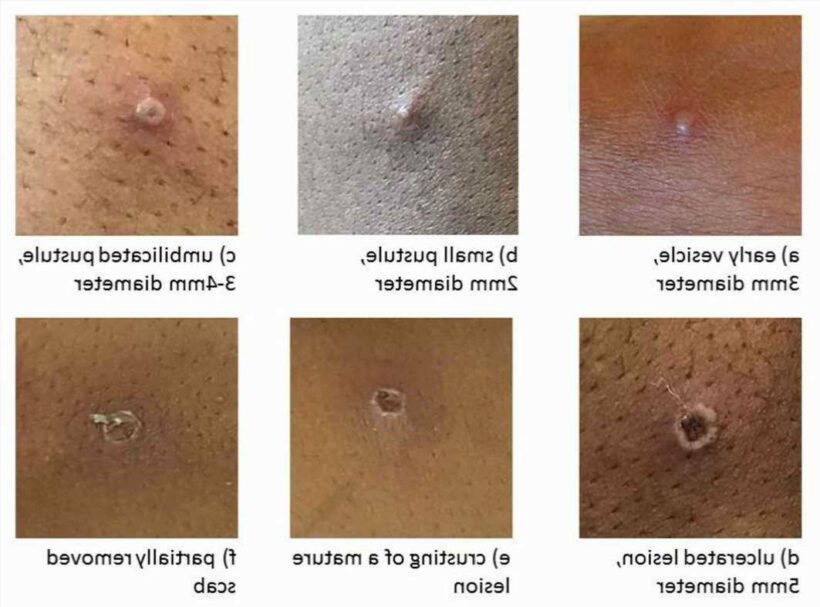A SET of images released by public health chiefs reveals the symptoms of monkeypox to look for.
People are being urged to be vigilant to the signs of the bug, which is spreading at an unusual rate globally.
There are 20 cases of monkeypox in the UK, a number which is growing “daily”, according to the UK Health and Security Agency (UKHSA).
Just under 100 cases in 12 countries have been confirmed by the World Health Organization (WHO) between May 13 and 21.
What’s unusual about these outbreaks is that they are occurring in places where monkeypox is not endemic.
Only eight cases reported in the UK over history, but now it is facing a predicted "significant rise" in cases.
Read more on monkeypox
Monkeypox outbreak is ‘unprecedented’ – Dr Hilary warns of 5 signs not to ignore
How many monkeypox cases are there in the UK?
The disease usually crops up in the topical and rural rainforests of Central and West Africa.
Monkeypox causes symptoms between five and 21 days after exposure.
It starts with flu-like symptoms, including a fever, headache, muscle and back ache and chills.
STAGES OF RASH
An itchy and sometimes painful rash slowly appears one to three days into illness, starting with the face, palms of the hands and soles of the feet.
Most read in Health
RISK ALERT Monkeypox outbreak is ‘unprecedented’ – Dr Hilary warns of 5 signs not to ignore
UK says monkeypox contacts should ISOLATE for 21 days as more cases confirmed
Belgium introduces monkeypox QUARANTINE as virus spreads across Europe
I’m a doctor and here’s 3 period conditions no woman should ignore
The rash evolves over several days – which experts at the UKHSA have provided photos of – spreading to other parts of the body.
What starts as a seemingly harmless red rash turns into angry blisters that can last several days.
UKHSA says: “Within one to five days after the appearance of fever, a rash develops, often beginning on the face then spreading to other parts of the body.”
This early phase of the rash, which they have not provided a photo for, looks like chickenpox, the agency says.
The inside of the mouth, genitals and lining of the eyes can also be affected by the nasty rash.
By the third day, lesions have progressed from flat (macular) to raised (papular).
And within a couple of days, the lesions become small blisters filled with clear fluid, called vesicles.
Vesicles are pictured in the first image of the chart (A).
Image B shows how the lesions become round, raised and firm to the touch. These are called pustules, and they contain yellow-coloured pus.
Lesions will develop a depression in the centre (umbilication), pictured in image C.
Then, the pustules will remain for approximately five to seven days before beginning to crust (pictured D-F).
Read More on The Sun
My BFF stole my hugely significant baby name & after her reaction we don’t speak
I slashed my gas bill by £25 a month with a simple boiler tweak
The UKHSA says: “An individual is contagious until all the scabs have fallen off and there is intact skin underneath. The scabs may also contain infectious virus material.”
Monkeypox lesions can very in size and don’t necessarily develop along the same timeline.
While some patients may have only a few lesions, others will have thousands, the WHO says.
“In severe cases, lesions can coalesce until large sections of skin slough off,” it says.
Source: Read Full Article










